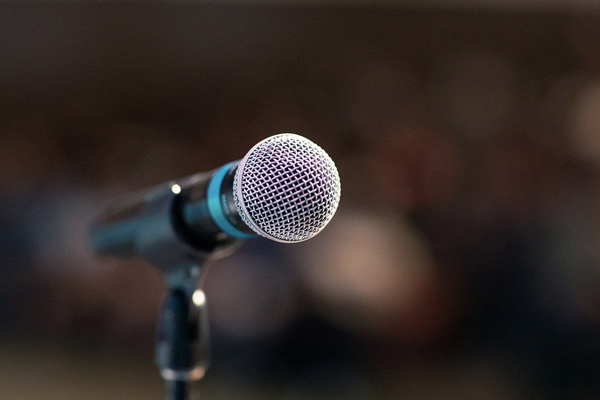In New Orleans, we are blessed with a rich concentration of artists, many of whom have attained worldwide recognition. Many of the artists who form the backbone of our entertainment and tourism culture are part-time artists with other jobs and pursuits that provide them with a basis for covering living expenses while they apply their craft, display their art or perform their music on a part-time basis.
The IRS has specific rules that are aimed at preventing part time artists from offsetting their taxable income with losses and expenses from their artistic pursuits by classifying such losses and expenses as personal hobby losses. Those pursuits that most closely lend themselves to comparison or classification as a “hobby” are typically the most frequently scrutinized of hobbies, e.g., music, painting, writing and photography.
Under Section 183 of the Internal Revenue Code (the “Code”), we are told that deductions for expenses are only allowed to the extent of any income related to those expenses, and that those deductible expenses are not allowed to reduce the taxpayer’s other taxable income via losses generated through the subject activity.
A hobby or other recreational activity is defined as an activity or pursuit not engaged in with the expectation of earning a profit. Section 162 and Section 212 provide the rules for deduction of ordinary business expenses. Section 162 provides for deductions of ordinary and necessary business expenses incurred in carrying on a trade or business, and Section 212 provides for expenses for producing or collecting income or for managing, conserving, or maintaining property held for the production of income. For hobby activities, these deductions against income are not allowed.
Determining whether an activity is a hobby or a business depends on whether the taxpayer has an actual business purpose of generating a profit. This determination is typically an “all facts and circumstances” analysis that centers on providing objective proof of a subjective concept – whether the taxpayer really intended to generate a profit from the activity as a primary business purpose.
Under Section 183, the standard objective test for hobby activities is if the subject activity generates a profit in at least three of the last five years. Even if this test is satisfied, the IRS may still prove that the activity is a non-business hobby based on other facts and circumstances. Satisfying this test can create a presumption of business activity in favor of the taxpayer, which is advantageous for taxpayers trying to avoid having their painting, guitar playing or home spun pottery art business reclassified as a non-business hobby, with their deductions for losses incurred discounted.
Numerous subjective factors used in the analysis are listed in the Code Regulations Section 1.183-2 for determining whether a taxpayer possesses a profit motive for a subject activity:
1. Manner in which the taxpayer carries on the activity (commercial, charging money, advertisements).
2. Expertise of the taxpayer or his advisers (any good at it, getting better?).
3. Percentage and amount of time and effort the taxpayer expends carrying on the activity (days of the week, percentage of overall time, also have a day job?).
4. Reasonable expectation that assets used in the activity may appreciate in value (deduction for personal art collection or actively running an art gallery or displaying for sale on a regular basis?).
5. Past success in taxpayer’s other similar or dissimilar activities (pattern of hiding income or deducting hobbies through a string of failures or pattern of multiple, successful small business ventures).
6. Taxpayer’s past history of income or losses, including the amount of occasional profits (always losing or some taxable income reported, how much are you making and how frequently do you make it).
7. Taxpayer’s overall financial position (subjective analysis of overall wealth and how the activity fits with day job, other holdings and lifestyle – very subjective smell test).
8. Is this activity a personal pleasure or recreational activity (is this personal recreation masquerading as a for profit business – legitimate business purposes or thin veil of business excuse to deduct otherwise personal pursuit?).
In evaluating whether an artist’s or hobbyist’s activities have a profit motive, certain factors will bear more weight than others depending on the activity. The more an activity is enjoyed or the more closely it is aligned with recreational activities, the more likely it is to be challenged as a non-business hobby activity. The longer the taxpayer shows a history of losing money every year, the more likely it is to be classified as a non-business hobby. Nevertheless, Tax Court cases have cited the “starving artist” concept as a basis for allowing the deduction of expenses for historically unprofitable pursuits under the theory that profits through the pursuit of artistic endeavors are typically difficult to achieve and may take years to occur, and in fact, it may take longer than in other traditional pursuits.
The key factors for determining a taxpayer’s profit motives for a particular activity are the overall manner in which the taxpayers conduct their activity, how developed their expertise is and the percentage of time and effort allocated to the activity. Hobbyists that can demonstrate that their artistic pursuit is approached, managed and publicized like a business, that they are good at what they are doing (or are getting better at it through demonstrated successes) and that they allocate a significant portion of their overall time commensurate with the nature of the pursuit, will likely be able to prove that their artistic endeavors constitute a legitimate business.

